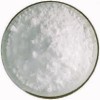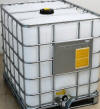Search for the supplies that you need here:
DMF Support and Documentations Available | |
 WHO-GMP Certified Good Manufacturing Practice Certified by World Health Organization |  WC, Written Confirmation for Active Substance to be imported into European Union (EU). |
Cetylpyridinium Chloride BP Ph Eur USP NF Grade Manufacturers
Anmol Chemicals is a manufacturer supplier exporter of Cetylpyridinium Chloride Monohydrate Anhydrous BP Ph Eur USP NF Grade and it offers materials as per IP BP EP Ph Eur USP NF JP FCC Food Grade as per the the latest monograph at best prices. Anmol Chemicals Group, established in 1976, is the pioneer manufacturer of Specialty Chemicals, Pharmaceutical Excipients, Some API, Food Chemicals in India. Anmol Chemicals Group has manufacturing facilities spread across Western India, representatives in Houston, Chicago USA and Dubai, UAE. We also have toll manufacturing units for processing chemicals in a few countries around the world. We make IP, BP, EP, USP, NF, Ph. Eur., JP, FCC or Food Grade, Analytical Reagent Grade, LR or Laboratory Reagent Grades and Pure Grades of various chemicals. All our items are analyzed to meet the required standards. We can supply the product in grams for your laboratory trial and in tons for your plant scale jobs.
We manufacture Bulk Drugs / API, Excipients, Pharmaceuticals (IP BP USP NF Ph Eur EP JP), Specialty Chemicals (Pure/Reagent), Mineral Fortifiers (FCC). Our manufacturing facility is FDA approved and GLP, cGMP, ISO9001, ISO14001, ISO/IEC 17025, ISO22000, FSSC 22000, ISO45001, FSSAI, Kosher, HALAL, COPP, WHO-GMP certified and Written Confirmation (WC) is available. Solid materials can be customized for particle size, shape, and bulk density. We observe WHO Good Manufacturing Practices and Good Laboratory Practices. We are a government-recognized STAR Export House and "Authorised Economic Operator (AEO)" per Indian Customs.
All technical documents and DMF support available.
Cetylpyridinium Chloride Monohydrate Anhydrous SDS of Manufacturers

Synonyms: Cetylpyridinium Chloride Monohydrate Anhydrous, or Hexadecylpyridinium Chloride Monohydrate Anhydrous
CAS Number: 123-03-5 and 6004-24-6 for monohydrate, Molecular Weight: 358.00 monohydrate, Chemical Formula: C21H38ClN-H2O monohydrate, EINECS EC Number: 204-593-9, FEMA: ----,
Cetylpyridinium Chloride is used to study the mechanisms of bacterial and virus inactivation. Generally, its monohydrate is used. A new safe & cost-effective preservative. An antiseptic used as active ingredient in over the counter, oral & personal care products. Cetylpyridinium chloride (CPC) is used in some types of mouthwashes, toothpastes, lozenges, throat sprays, breath sprays, and nasal sprays. It is an antiseptic that kills bacteria and other microorganisms. It has been shown to be effective in preventing dental plaque and reducing gingivitis. It has also been used as an ingredient in certain pesticides and for industrial purpose.
Specifications of Cetylpyridinium Chloride USP NF Grade:
C21H38ClN-H2O --- 358.00
Pyridinium, 1-hexadecyl-, chloride, monohydrate.
1-Hexadecylpyridinium chloride monohydrate --- CAS 6004-24-6.
Anhydrous --- 339.99 CAS 123-03-5
Cetylpyridinium Chloride contains not less than 99.0 percent and not more than 102.0 percent of C21H38ClN, calculated on the anhydrous basis.
Packaging and storage: Preserve in well-closed containers.
Identification:
A: Infrared Absorption.
B: Ultraviolet Absorption.
C: Dissolve 100 mg in 50 mL of water: a 10-mL portion of the solution responds to the tests for Chloride, except that a turbidity is produced, rather than a curdy white precipitate, when the silver nitrate is added.
Melting range: between 80 and 84, the preliminary drying treatment being omitted.
Acidity: Dissolve 500 mg, accurately weighed, in 50 mL of water, add phenolphthalein and titrate with 0.020 N sodium hydroxide: not more than 2.5 mL is required for neutralization.
Water: between 4.5% and 5.5%.
Residue on ignition: not more than 0.2%, calculated on the anhydrous basis.
Heavy metals: 0.002%.
Pyridine: Dissolve 1 g in 10 mL of sodium hydroxide solution (1 in 10) without heating: the odor of pyridine is not immediately perceptible.
Assay: Transfer about 200 mg of Cetylpyridinium Chloride, accurately weighed, to a glass-stoppered, 250-mL graduated cylinder containing 75 mL of water. Add 10 mL of chloroform, 0.4 mL of bromophenol blue solution (1 in 2000), and 5 mL of a freshly prepared solution of sodium bicarbonate (4.2 in 1000) and titrate with 0.02 M sodium tetraphenylboron until the blue color disappears from the chloroform layer. Add the last portions of the sodium tetraphenylboron solution dropwise, agitating vigorously after each addition. Each mL of 0.02 M sodium tetraphenylboron is equivalent to 6.800 mg of C21H38ClN.
Specifications of Cetylpyridinium Chloride BP Ph Eur Grade:
C21H38ClN-H2O --- 358.0 --- CAS 6004-24-6
Action and use: Antiseptic.
DEFINITION
Cetylpyridinium chloride contains not less than 96.0 per cent and not more than the equivalent of 101.0 per cent of 1-hexadecylpyridinium chloride, calculated with reference to the anhydrous substance.
CHARACTERS
A white or almost white powder, slightly soapy to the touch, soluble in water and in alcohol. An aqueous solution froths copiously when shaken.
IDENTIFICATION
First identification: B, D
Second identification: A, C, D
A. Dissolve 0.10 g in water and dilute to 100.0 mL with the same solvent. Dilute 5.0 mL of this solution to 100.0 mL with water. Examined between 240 nm and 300 nm, the solution shows an absorption maximum at 259 nm and 2 shoulders at about 254 nm and at about 265 nm. The specific absorbance at the maximum is 126 to 134, calculated with reference to the anhydrous substance.
B. Examine by infrared absorption spectrophotometry, comparing with the spectrum obtained with cetylpyridinium chlorideCRS. Examine the substances in the solid state.
C. To 5 mL of dilute sodium hydroxide solution add 0.1 mL of bromophenol blue solution and 5 mL of chloroform and shake. The chloroform layer is colourless. Add 0.1 mL of solution S (see Tests) and shake. The chloroform layer becomes blue.
D. Solution S gives reaction of chlorides.
TESTS
Solution S: Dissolve 1.0 g in carbon dioxide-free water and dilute to 100 mL with the same solvent.
Appearance of solution: Solution S is not more opalescent than reference suspension II and is colourless.
Acidity: To 50 mL of solution S add 0.1 mL of phenolphthalein solution. Not more than 2.5 mL of 0.02 M sodium hydroxide is required to change the colour of the indicator.
Amines and amine salts: Dissolve 5.0 g with heating in 20 mL of a mixture of 3 volumes of 1 M hydrochloric acid and 97 volumes of methanol and add 100 mL of 2-propanol. Pass a stream of nitrogen slowly through the solution. Gradually add 12.0 mL of 0.1 M tetrabutylammonium hydroxide and record the potentiometric titration curve. If the curve shows 2 points of inflexion, the volume of titrant added between the two points is not greater than 5.0 mL. If the curve shows no point of inflexion, the substance to be examined does not comply with the test. If the curve shows one point of inflexion, repeat the test but add 3.0 mL of a 25.0 g/L solution of dimethyldecylamine in 2-propanol before the titration. If the titration curve after the addition of 12.0 mL of the titrant shows only one point of inflexion, the substance to be examined does not comply with the test.
Water: 4.5 per cent to 5.5 per cent, determined on 0.300 g by the semi-micro determination of water.
Sulfated ash: Not more than 0.2 per cent, determined on 1.0 g.
Keywords: Cetylpyridinium Chloride Monohydrate Anhydrous IP BP Ph Eur EP USP Analytical Reagent FCC Food Grade CAS Number 123-03-5 and 6004-24-6 Manufacturer Supplier Exporter Monograph Uses Chemical Molecular Formula Weight.



Manufacturer Supplier Exporter



Manufacturer Supplier Exporter
ANMOL CHEMICALS Private Limited
Representatives in Houston, Chicago and New York, USA
TEL: (OFF) +91 22 23726950, +91 22 23774610, +91 22 23723564
Taloja Navi Mumbai, Banglore, INDIA
e-mail: info@anmol.org
Copyright and Usual Disclaimer is Applicable
Last updated 9-oct-25
Exporters to USA, Canada, UAE, Kuwait, Qatar, Gautemala, Tunisia, Europe, South Africa, Bangladesh, Sri Lanka, Tanzania, Kenya, Egypt, Iraq, Turkey, Israel, Vietnam, Nigeria, Uganda, Brazil, Chile, Argentina, Dubai, UAE, Saudi Arabia, Cameroon, Mexico, Brazil, Chile, Argentina, Korea, Thailand, Malaysia, Indonesia, Jakarta, Australia, China, Germany, France, etc.
Representatives in New York, Houston - Texas, Chicago - Illinois, Los Angeles.
All products are Sold for Industrial and Laboratory Use only.
Fast Selling IP BP Ph Eur EP USP NF JP Analytical Reagent FCC Food Grades of Chemicals by Anmol Chemicals
Ammonium Persulfate --- Acetic Acid Glacial --- Aluminum Chloride --- Ammonium bicarbonate --- Benzyl Alcohol --- Butylated Hydroxyanisole --- Butylated Hydroxytoluene --- Boric Acid --- Calcium Butyrate --- Calcium Chloride --- Calcium Hydroxide --- Calcium Lactobionate --- Calcium Saccharate --- Carbamide Peroxide --- Calcium Oxide --- Calcium Sulfate --- Chromic Chloride --- Fumaric Acid --- Magnesium Butyrate --- Magnesium Chloride --- Magnesium Sulfate --- Malic Acid --- Maleic Acid --- Manganese Chloride --- Manganese Sulfate --- Octyldodecanol --- Oleic acid --- Phenylethyl Alcohol --- Propylene Carbonate --- Potassium Hydroxide Pellets --- Potassium Alum --- Selenious Acid --- Sodium Acetate --- Sodium Bromate --- Sodium Selenite --- Sodium Perborate --- Sodium Hydroxide --- Sodium Sulphate --- Sodium Sulfide --- Sodium Thiosulfate --- Urea --- Zinc Chloride --- Zinc Sulphate ---
Cetylpyridinium Chloride
Monohydrate Anhydrous BP Ph Eur USP NF Grade Manufacturers



















